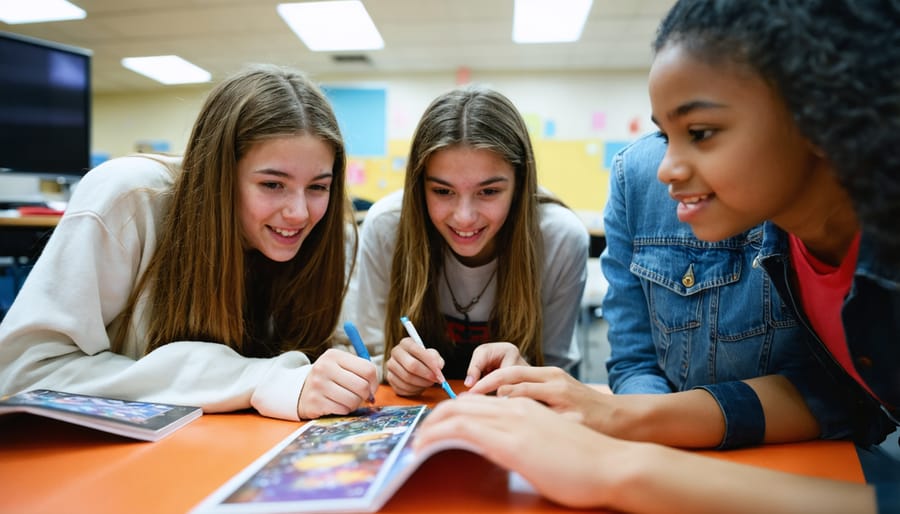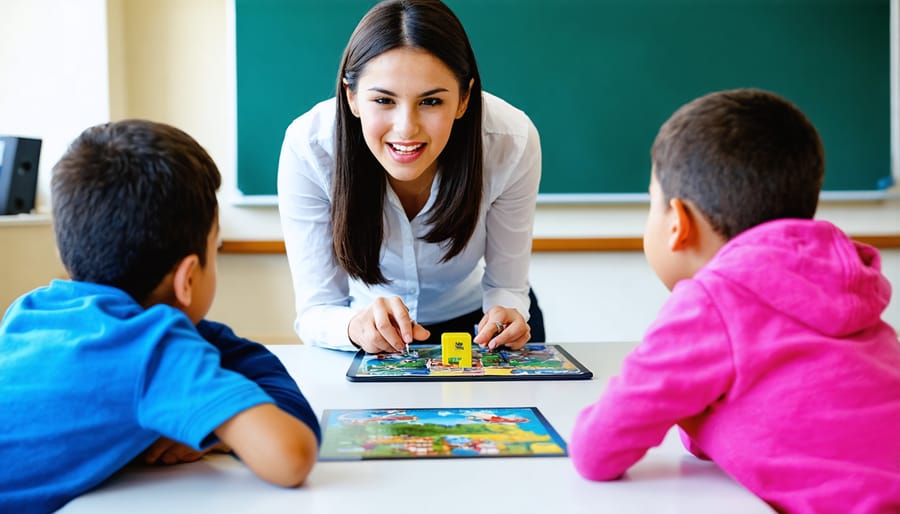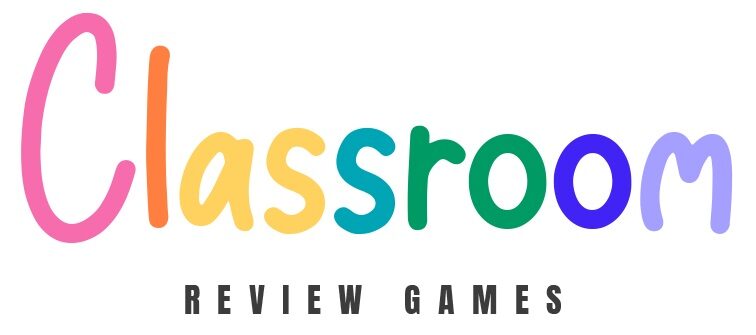Make High School Learning Pop with These Classroom Games That Actually Work
Transform your high school classroom into an interactive learning hub with educational games that increase student engagement and drive deeper understanding. Digital platforms like Kahoot!, Quizlet Live, and Gimkit spark friendly competition while reinforcing key concepts across all subjects. These game-based tools deliver instant feedback, track student progress, and adapt to different learning speeds.
Beyond digital solutions, traditional board game formats modified for academic content create powerful learning experiences. Convert Jeopardy templates into subject review games, adapt Pictionary for vocabulary practice, or design escape room scenarios that integrate multiple learning objectives. The key lies in matching game mechanics to specific learning goals while maintaining the delicate balance between entertainment and education.
Students retain information better when actively participating in their learning journey. Educational games provide this crucial active engagement while developing critical thinking, collaboration, and problem-solving skills – essential components for modern education.
Why Educational Games Matter in High School
Breaking Through the ‘Too Cool’ Barrier
Let’s face it – high school students often resist anything that seems “educational.” But games have a special way of breaking down these barriers. When learning feels like play, even the most resistant teenagers tend to lower their guard and engage. Educational games tap into students’ natural competitive spirit and desire for social interaction, making participation feel less like a classroom requirement and more like a fun challenge.
The key is presenting games as engaging activities rather than traditional learning exercises. When students see their peers getting involved and having fun, the “too cool” attitude often melts away naturally. This is especially effective with team-based games that create a shared experience and build classroom community. Plus, letting students take leadership roles in organizing and customizing game rules gives them ownership of the activity, making them more likely to participate enthusiastically.
Remember, even seemingly disinterested students often surprise us with their engagement when the right game comes along!

The Science Behind Game-Based Learning
Research consistently shows that game-based learning activates multiple regions of the brain, making it a powerful tool for high school education. When students engage with educational games, their brains release dopamine, which enhances memory formation and motivation. Studies have found that gaming improves problem-solving abilities by up to 20% and increases student engagement by nearly 35%.
What makes educational games so effective? They provide instant feedback, create low-stakes environments for trial and error, and naturally promote active learning. Students who participate in educational gaming show improved retention rates, better critical thinking skills, and increased collaboration with peers.
The competitive elements in games also boost motivation, while the interactive nature helps students connect abstract concepts to real-world applications. This combination of fun and learning creates an ideal environment for teenagers to develop both academic and social-emotional skills.
Best Educational Games for Core Subjects
Math and Science Games
Math and science games bring abstract concepts to life, making complex topics more engaging for high school students. Popular platforms like PhET Interactive Simulations offer virtual labs where students can explore physics, chemistry, and biology concepts hands-on without the safety concerns of traditional lab work.
For mathematics, Desmos and GeoGebra transform algebraic equations and geometric concepts into interactive visualizations. Students can manipulate variables in real-time, seeing how changes affect graphs and solutions. Games like Factris (a Tetris-style factoring game) and Dragon Box make algebra feel more like puzzle-solving than homework.
Chemistry teachers love ChemCrafter, where students build virtual labs and conduct experiments safely. For biology, Cell Command turns cellular processes into engaging missions, while Evolution lets students create and evolve their own species. Physics educators often use Quantum Games to explain particle behavior and wave theory through intuitive gameplay.
These STEM games work particularly well in both individual and group settings. Try organizing class competitions using Kahoot! for quick science reviews, or set up “escape room” scenarios using platforms like Breakout EDU, where students solve science puzzles to progress. The best part? Many of these games provide instant feedback and track student progress, making assessment easier while keeping students motivated.

Language Arts and Social Studies Games
Language Arts and Social Studies often present unique challenges for gamification, but several engaging options can transform these subjects into interactive experiences. “Debate Battle” turns controversial historical topics into structured debate competitions where students argue from different perspectives, strengthening both their historical knowledge and persuasive speaking skills.
For literature lovers, “Character Quest” lets students create digital avatars of book characters and navigate through plot-based challenges. This game works particularly well with classics like “To Kill a Mockingbird” or “The Great Gatsby,” helping students deeply understand character motivations and story themes.
History teachers love “Timeline Tactics,” where students compete to correctly place historical events in chronological order. Add a twist by having students create their own timeline challenges for classmates. “Global Politics Simulator” puts students in the roles of world leaders, letting them experience historical decisions firsthand while learning about diplomatic relations and consequences.
For vocabulary and writing practice, “Word Warriors” turns grammar and composition into team-based challenges. Students earn points for identifying literary devices, correcting grammar errors, or crafting compelling arguments. The competitive element keeps teens engaged while reinforcing essential language skills.
These games can be adapted for different skill levels and integrated with your existing curriculum. Many teachers find success by using them as review activities or lesson introductions to spark student interest.

Implementation Strategies That Work
Timing and Pacing Tips
Timing is everything when implementing classroom games for high school students. Start by introducing games at key moments during your lesson plan – they work great as energizing warm-ups, mid-lesson breaks, or end-of-class review activities.
Keep game sessions short and sweet, typically 10-15 minutes. This maintains engagement while leaving plenty of time for core instruction. Watch for natural transition points in your lessons where students might benefit from a quick mental reset.
Plan your gaming activities strategically throughout the week. Consider using them on Mondays to boost enthusiasm or Fridays to reinforce weekly concepts. Pay attention to your students’ energy levels – if they’re struggling to focus after lunch, that might be the perfect time for an interactive learning game.
Remember to leave time for reflection and discussion after each game. A quick 2-3 minute debrief helps students connect the fun activity to actual learning objectives. Always have a backup plan ready, and be flexible – if students are particularly engaged, you might extend the activity, or if they’re not connecting with it, wrap it up early and try a different approach.
Assessment Integration
Educational games offer fantastic opportunities for seamless assessment without the stress of traditional testing. By integrating game mechanics with evaluation, you can track student progress while they’re actively engaged and having fun. Many educational games provide detailed analytics dashboards where you can monitor individual performance, identify areas of struggle, and celebrate achievements.
Consider using games that offer built-in quizzes or knowledge checks between levels. These natural progression points help you gauge understanding without disrupting the flow of learning. Some games even allow you to customize assessment parameters, letting you align the evaluation with your specific learning objectives.
Remember to use a mix of formative and summative assessment features. Quick gameplay results can inform your daily teaching decisions, while longer-term progress tracking helps measure overall learning outcomes. Many games also offer instant feedback, allowing students to self-assess and adjust their strategies in real-time.
Best of all, game-based assessments often reduce test anxiety while providing more authentic measures of student understanding. Students are more likely to demonstrate their true knowledge when they’re relaxed and engaged in gameplay.
Customization and Adaptation
One of the best features of educational games is their flexibility to meet diverse student needs. Start by assessing your students’ current knowledge levels through quick pre-game surveys or informal conversations. This helps you identify where modifications might be necessary.
For advanced learners, increase complexity by adding time constraints, incorporating more challenging vocabulary, or introducing multi-step problem-solving elements. You might also assign these students leadership roles in team-based games, allowing them to help guide their peers while reinforcing their own understanding.
For students who need additional support, break down complex games into smaller, manageable segments. Consider providing vocabulary lists beforehand, extending time limits, or offering visual aids. Pair struggling students with more confident peers in cooperative games to promote peer learning while maintaining engagement.
Cultural adaptations are equally important. Modify game scenarios to reflect your students’ backgrounds and interests. For example, customize word problems or trivia questions to include local references or current events that resonate with your class.
Digital games often come with built-in difficulty settings, but don’t forget about analog games. Create different sets of question cards varying in difficulty, or develop modified scoring systems that reward improvement rather than just correct answers.
Remember to maintain open communication with your students about game modifications. Their feedback is invaluable in fine-tuning activities to ensure everyone benefits from the learning experience while feeling appropriately challenged and supported.
Educational games have proven to be powerful tools for engaging high school students and making learning more enjoyable. By incorporating these interactive elements into your classroom, you can transform traditional lessons into memorable experiences that students genuinely look forward to. Whether you choose digital quiz platforms, role-playing scenarios, or competitive review games, the key is to select activities that align with your learning objectives while maintaining student interest.
Remember that customization is crucial – adapt these games to fit your specific subject matter and student needs. Start small with one or two games, gather feedback from your students, and gradually expand your repertoire. The effort you invest in implementing these educational games will pay off through increased student participation, better retention of material, and a more dynamic classroom environment.
Don’t be afraid to experiment and have fun with these teaching tools. Your enthusiasm will be contagious, and students will appreciate the effort to make their learning experience more engaging. With the right approach, educational games can become an invaluable part of your teaching strategy, creating an environment where learning feels less like work and more like play.


